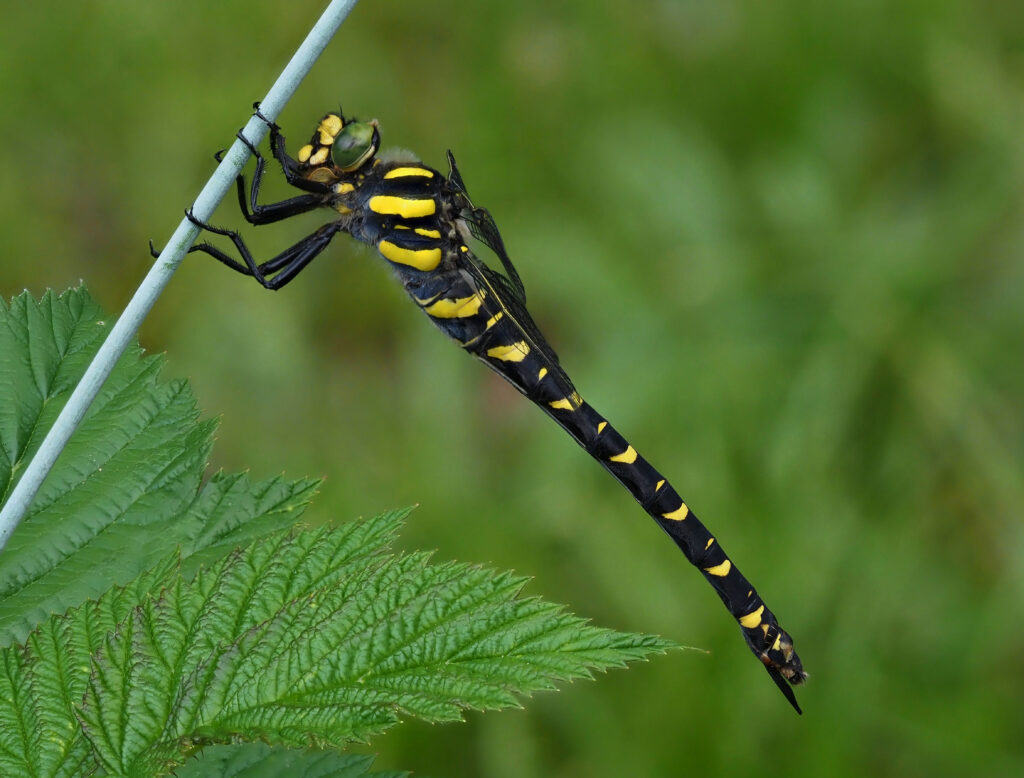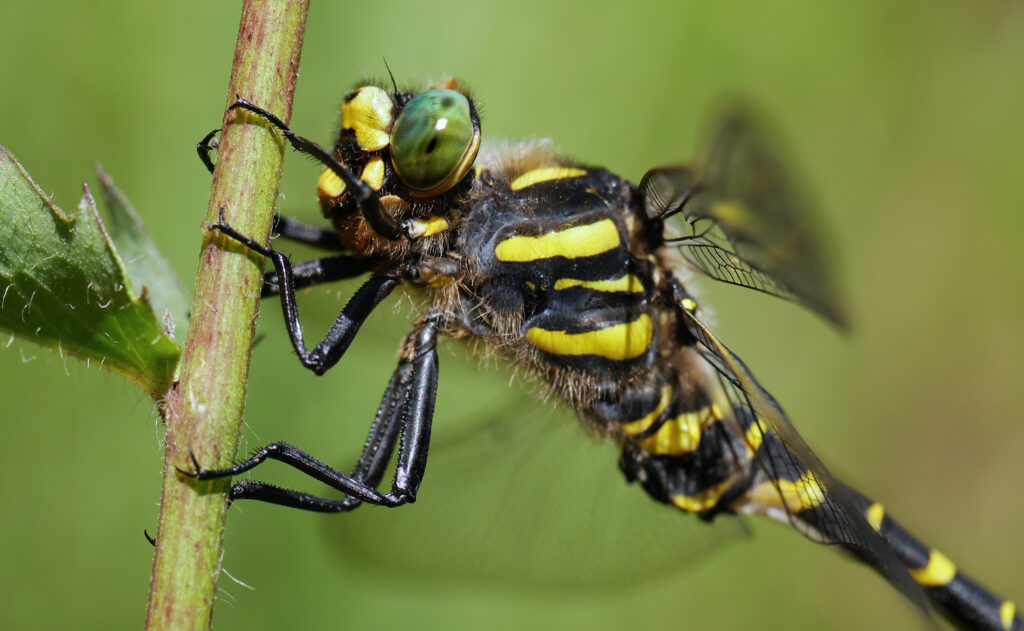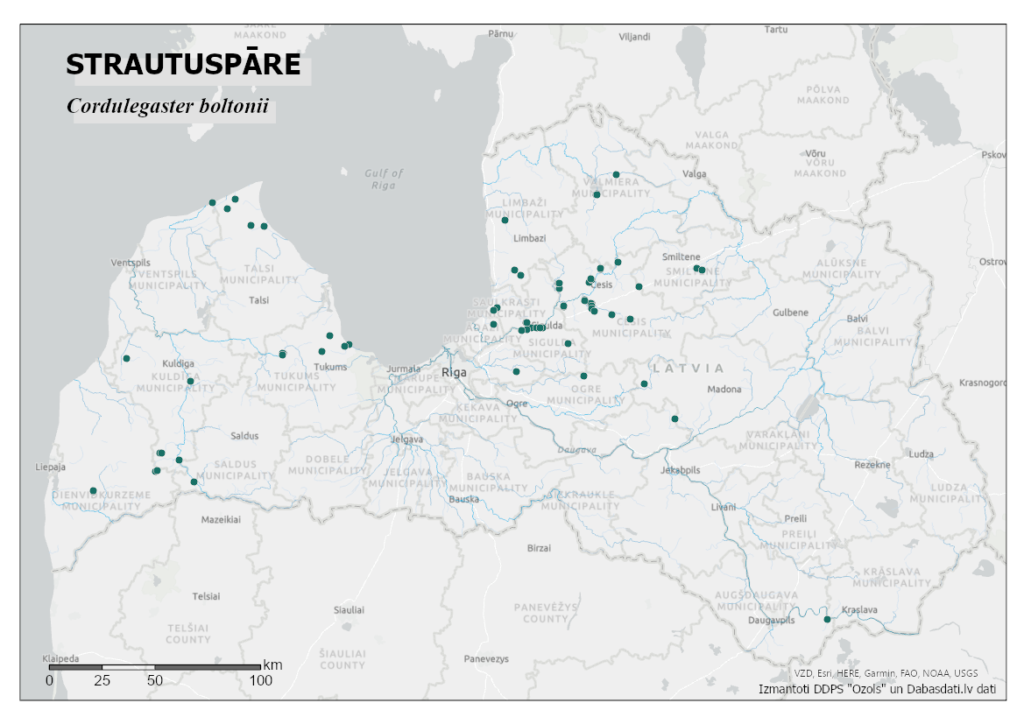Protected species of the month - the golden-ringed dragonfly
At the end of June, we would like to introduce this month's species - the golden-ringed dragonfly (Cordulegaster boltonii). Although the dragonfly can be found from the beginning of June until the middle of August, it can be found most freuqently during the end of June, so be careful when you go out into nature, and maybe you will be able to see the species!

Despite the name of the species, it is far from ordinary - on the contrary, its appearance is very bright. This is the only dragonfly species in Latvia, whose entire body is black with yellow spots. The body length of the golden-ringed dragonfly is 74-85 mm, the eyes are green, meeting only at one point in the middle.

The golden-ringed dragonfly lays eggs in water where they develop for 2-4 weeks. Larvae live in stagnant freshwater habitats, and both larvae and adult dragonflies are carnivores that feed largely on a variety of invertebrates. In Latvia, these dragonflies inhabit streams and small rivers (1-10m wide) with clean water. The watercourses chosen by the species are usually located in the forest, so it's rarely found outside the forest.

In Latvia, this beautiful species is threatened by the cleaning of forest watercourses, ditches and drains, if the natural elements characteristic of watercourses (pebbles, boulders and their collections in the watercourse bed) are not preserved. The dragonfly can also be negatively affected by beaver activity, which results in increased water temperatures and reduced oxygen levels in water bodies. The species is also negatively affected by increased droughts as a result of climate change, which harms both the dragonfly and the species it consumes for food.
